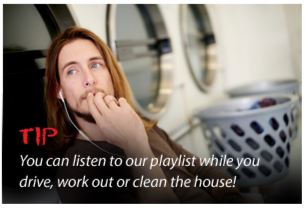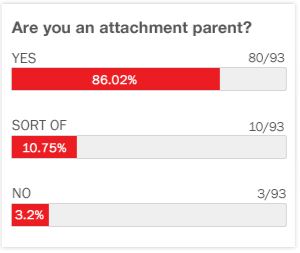
June 12th 2002 was a perfect summer night. I kissed my twins goodnight and laid them down to sleep in their room. My husband had taken our 5-year-old daughter for a walk in the wagon while I did some cleaning up. I could hear my little babies playing and laughing as they always did in their cribs before finally falling asleep. As I continued cleaning up my husband came back from his walk and we talked about what it was like to be parents to our 5-year-old daughter. We laughed and talked to her about what life was like when we were her age.
We had all agreed to quietly go in and check on the twins before going to bed ourselves. With my husband and daughter behind me, I slowly peeked open the door and started to tiptoe inside. My attention went to my daughter’s crib which was the farthest one away from me. She was in the corner of her crib sitting up with her head pointing down. I immediately knew something was wrong. I screamed “Oh God!” and picked her up and found her body cool to the touch and a very tiny cord underneath her chin. I removed the cord and my husband grabbed her from me. Everyone was screaming and crying. I ran for the phone and dialed 911 and began to perform CPR as my husband screamed and cried for her to live. I knew she would not make it. It was too late but I had to try. Before I knew, it the paramedics were at my door whisking her away into the ambulance. At that point, all I could do was fall to my knees and beg God for a miracle. There was no miracle for us that night.
The paramedics drove off with my daughter in the back and my husband in the front. I was not allowed to leave the scene of the accident. The police began to ask me a series of questions. Yes, the pull cords were tied up. Yes I childproofed my home. I followed the doctors’ safety checklist. No, I don’t understand how she got to the cords; they were tied “out of her reach”. I had showed them the loop that was exposed and hanging on the other side of the blind three feet away from the pull cord. The police were just as puzzled about this as I was. I was allowed to finally leave after begging and pleading to be with my family. A neighbor raced me to the hospital and all I could do was sit in the car with the weight of knowing she was already gone when I found her. Cheyenne Rose was officially pronounced dead by attending physician and a sobbing nurse when I arrived at the hospital. My life as I once knew it, completely fell apart in that moment.
After the funeral I had lost all confidence I had in being a mother. There is something about losing a child in your care that rips to shreds any confidence you had as a mother. Whenever I went anywhere, people looked at me and I felt completely and utterly naked in my failure to keep my precious daughter alive and safe. I replayed so many things in my mind. I had all the child-proofing devices such as drawer latches, door knobs, my medications were all out of reach and my window blind cords were too. Living in a 900 square foot house didn’t leave a lot of room for a family of 5. I thought of different ways I could have placed the cribs. There were no other options but to have one of the cribs near the window. I trusted that having my cords out of reach would keep my children safe. .
After the funeral I was still puzzled as to how Cheyenne got that cord out of the blind. It just made no sense to me. A friend of mine showed me exactly how my daughter formed the loop in the blind. There was a defect in horizontal blinds that I was unaware of which had caused similar deaths of 16 children in the United States. The first death was reported in 1987 to the United States Consumer Product Safety Commission. Not until 2000 was a recall announced by the USCPSC.
It didn’t take long before I started investigating these types of accidents. It wasn’t that I was looking for someone to blame, it was knowing that parents all over the United States had no idea that this problem existed and I knew this was going to happen again. I didn’t want a mother calling me asking me why I didn’t do something to stop this. That was a phone call that I could not bear. It was bad enough having the weight of my daughter’s death on my shoulders but to have the foreknowledge of this hazard and doing nothing about it was just more weight on my shoulders that I was unwilling to bear.
Friends of mine created a memorial website for my daughter. It was a beautiful tribute to her. Not long after, I received a message through the memorial site from a mother, who had lost her daughter 2 weeks after my daughter died. The events of this child’s accident were identical to mine. A few weeks later another mother contacted me. It wasn’t long before I was in contact with a handful of parents all asking why something had not been done about these cords that were taking the life of children. My husband and I knew that we needed to do something. We founded Parents for Window Blind Safety in November 2002 to not only act as a support group for parents but to centralize all the data so that reporters, police, investigators and others could have access to information at their fingertips about these types of deaths. PFWBS plays a large role in the development of window covering safety standards in the United States and Canada and has developed a Seal of Approval that is placed on products that pass strict guidelines that eliminate the strangulation hazard.
As the years went by we were contact by parents whose children strangled by gaining access to cords:
• In safety cleats which were tied up, “out of reach”
• In window cord wind up devices were “out of reach”
• By pulling on cords attached to walls, breaking them loose
• Off roll up bamboo shades, where pull cords were tied up “out of reach”
• On the back of roman shades, pull cords were tied up “out of reach”
Do you see the theme here? What does it mean for something to be out of reach for our children? Do you have one of those ninja toddlers that can defeat the laws of gravity and get on top of the refrigerator by the time you come back from the bathroom? It’s these types of kids that get to the cords that we think are “out of reach.” We can tell our kids no all we want, but kids don’t always obey. They want to play. They see movies like Tarzan, Spiderman, Dora, and Tangled and want swing around like the characters did in the movie. What better thing to do that with than a cord hanging from the window!
Watch this video to see how quickly these accidents happen.
Since the death of my daughter, PFWBS has had 260 reports of children that have strangled on window covering cords. Some have lived, some have died, some have been so severely injured they will never walk, talk, or play again. Over 40% of these accidents go unreported to the United States Consumer Product Safety Commission (USCPSC) so we believe this number to be low. In fact, the USCPSC estimates that from 1996-2012, 1549 children were seen in emergency rooms across the United States for window cord strangulation-related injuries.
In the past few years, the technology has grown tremendously with cost-effective cordless products starting as low as $14.99 and cord covering retrofits that truly eliminate the hazard, such as the Fashion Wand . Our organization along with the Consumer Federation of America, Consumers Union, Kids in Danger, U.S. PIRG, Public Citizen, Independent Safety Consulting, Safety Behavior Analysis, Inc. filed a petition with the US Consumer Product Safety commission asking for operational cords to be inaccessible by way of a cordless operational system or by some type of cord covering device that limits access to the cord.
October 8, 2014, the US CPSC unanimously voted 5-0 to start the rulemaking process that could eventually lead to mandatory safety standards for all new window coverings. That said, the safety message has changed. The CPSC wrote a letter to the Industry in July 2014 stating their position on safety cleats.
“Finally, we would like to make it clear our position on the use of a cord cleat as a safety device. Staff does not believe that cord cleats are an effective means of mitigating the pull cord hazard….”
The CPSC is now adamantly saying to Go Cordless, a tagline PFWBS has used since our founding. Not only is the CPSC saying this, but just recently Industry has admitted in their own press release that tassels do not address the strangulation hazard on pull cords.
“Some retrofit kits do not address the dangling pull cord hazard associated with many commonly used window blinds
What this means is if safety experts are telling the public to use “free safety kits” and a parent has horizontal blinds, the hazard is not being addressed and continues to lurk in the home. The tassel retrofit for blinds does NOT address the strangulation hazard, which is why the window covering petition was filed. The 1994 tassel retrofit failed. This is why CPSC voted to move the petition forward. This is why the message has changed. This is why safety experts must be diligent about changing what they say to the public when blogging or writing about window covering safety. It starts with us. We are the experts that public counts on who has cutting edge on safety information. Help us spread awareness about the dangers of window blinds. Live Safe…Go Cordless










